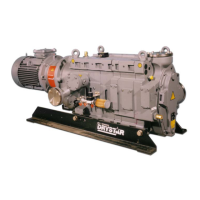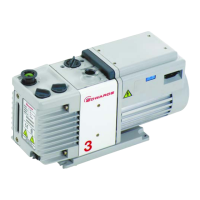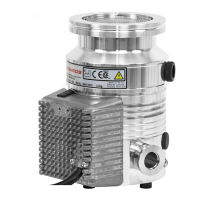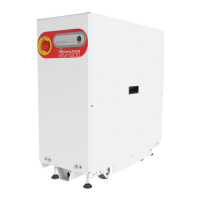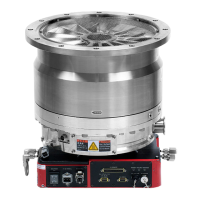3.1.1 Dry pumping systems with oponal castors
WARNING:
Dry pumping systems ed with castors should only be wheeled short distances over
at surfaces. If the oor surface is uneven or has obstacles, the dry pumping system
should be lied with suitable liing equipment.
Dry pumping systems are supplied with an opon of skids or castors. For dry pumping
systems ed with castors, it is important to note that the castors are intended only to
aid the manoeuvre of the dry pumping system into its nal operang posion. Dry
pumping systems should be moved near to their nal operang posions using either a
forkli or pallet truck or lied via the eyebolts as described above.
The force required to push a dry pumping system on its castors varies greatly depending
on the surface nish, cleanliness of the oor and any slopes or inclines. The forces
quoted in General technical data on page 15 were measured on a at and level concrete
oor and are not necessarily representave of all industrial locaons.
It is the user's responsibility to carry out a risk assessment of their locaon and take
appropriate measures to ensure that the dry pumping system is manoeuvred safely and
in accordance with local and naonal manual handling guidelines.
3.1.2 Levelling the pump
The dry pumping system must be located on a rm, non-combusble, level surface,
capable of supporng the pump mass, to ensure that it works correctly and is not
damaged. The pump must be level to a maximum of 3 degrees in any direcon,
measured at the pump inlet. It can be located directly on the oor or a frame. Ensure
that access is possible to the emergency stop buon (refer to Figure: Front panel
controls, item 1). Guidance for the access areas (general and service) is given in the
installaon drawings.
▪
Pumps with skids are provided with four oor mounng plates, refer to Figure:
Front view of the pumping system with the side exhaust and skids ed, item 2. If
necessary, t shims (which must be supplied) to ensure that the dry pumping
system is level.
▪
Pumps with castors are provided with the four levelling feet, refer to Figure: The
controls/connectors on the rear of the pump (system with rear exhaust and
castors/levelling feet ed), item 21. Once the dry pumping system has been
pushed into the posion, adjust the levelling feet to make sure that the dry
pumping system is level and is not supported by the castors. Refer to the
installaon drawings in Installaon drawings on page 80 for the suggested jacking
height.
3.1.3 Securing the pump
To secure the pump in place to prevent inadvertent movement (for example, during an
earthquake), take note of the following:
▪
Dry pumping systems with castors are supplied with four o seismic restraints as
detailed in the installaon drawings.
Page 30
M58800880_H - Installaon
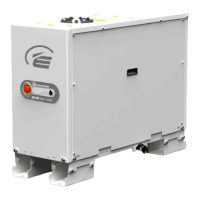
